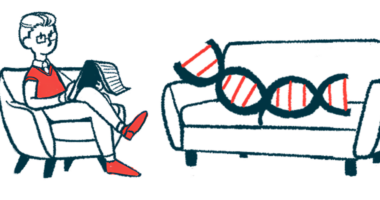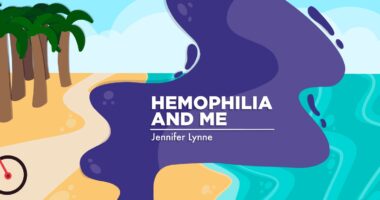A man with hemophilia B shares his gene therapy story, part 3
How Hemgenix transformed this 75-year-old's everyday life

Last in a series. Read parts one and two.
In the final installment of my three-part interview with Chip Hailey, 75, we explore what his life looks like after gene therapy. Chip shares how Hemgenix (etranacogene dezaparvovec) has transformed his daily routine, his mindset, and his outlook on living with hemophilia B.
Excerpts from our email exchange follow, with light editing for style.
JL: What’s been the biggest change in your daily life since gene therapy?
CH: For me, life after Hemgenix has been great. I no longer need to infuse factor, which I had been doing once a week for years, and for me, I just feel so great not having to constantly worry about a bleed or taking my factor with me.
For years and years, I didn’t talk about my hemophilia because I didn’t want people to feel sorry for me. Now, I will talk about gene therapy to anybody who will listen. My eagerness and willingness to participate in a clinical trial changed my life, and I’m happy to share that with anyone who will listen.
Are you under close monitoring or taking medications for bleeding episodes?
Right after the clinical trial I had to do blood work weekly for about three months to monitor my progress. That was eventually reduced to every few weeks, and now it’s down to twice a year. The follow-up also included monitoring my liver enzymes, which were normal throughout the process. I agreed to five years of monitoring when I signed up for the trial and, in December, we started a 10-year monitoring program. Initially, the monitoring will be every six months and then it will be once a year.
How has gene therapy affected your mental health?
After Hemgenix I thought about all the time I needed to spend with my weekly infusions and thinking through when and where to infuse if I wasn’t going to be at home. I used to always worry about a trauma that would cause me to need to infuse, but I don’t anymore. Even after the clinical trial I used to worry, but it’s been several years, and the worrying is now a thing of the past.
I remember that not long after the clinical trial, we moved into a new house and I lost all of my needles. A couple of years ago we found them, and I threw them in the trash! Even though it had been so long since I needed one, it still felt really good to do that.
What would you say to someone who’s thinking about gene therapy but is unsure?
Everybody’s situation is different, and my journey may have been unusual because of my age and education and my exposure to gene therapy in the run-up to the clinical trial. But I took the time to educate myself and I talked with the doctor. For me, it was easy — it was a no-brainer.
I would say to someone who isn’t sure about gene therapy to do your homework. Talk to your doctor. Do your own research. Speak to people like me who have been exactly where you are right now. I probably had the same concerns and questions they now have, and there are people who can help. I’m just so happy to be able to share my experience with others.
What do you wish you had known before going through it?
Ultimately, I wish I had known how easy it was going to be. I basically replaced weekly infusions with quick blood draws. Now, I don’t need infusions, and I only do blood work twice a year. It’s natural to worry and look for obstacles and think something’s going to happen to slow things down or stop it. But that wasn’t the case for me.
How do you feel about the future — your own, and the future of treatment in general?
I think the sky is the limit for me. Even with all the stuff that I went through, I ended up with the best outcome that I could have had.
I’ve suffered from joint bleeds throughout my life, since when I was little there were no real treatments, and then, even once I was on prophylaxis, I experienced breakthrough bleeds. That’s led to significant joint issues — I’ve had a knee replacement, I have no cartilage in my ankle, I had to switch hands I write with because of elbow issues, and it’s hard to cut food because of joint damage in my hands and wrists. I could have possibly avoided a lot of that if I had the treatments we have now, including gene therapy, when I was younger.
I recently spoke with parents of a child living with hemophilia, and I stressed that, with all the advances I’ve seen in my lifetime, I believe their child has an incredibly bright future ahead.
Thank you, Chip!
Note: Hemophilia News Today is strictly a news and information website about the disease. It does not provide medical advice, diagnosis, or treatment. This content is not intended to be a substitute for professional medical advice, diagnosis, or treatment. Always seek the advice of your physician or another qualified health provider with any questions you may have regarding a medical condition. Never disregard professional medical advice or delay in seeking it because of something you have read on this website. The opinions expressed in this column are not those of Hemophilia News Today or its parent company, Bionews, and are intended to spark discussion about issues pertaining to hemophilia.







Leave a comment
Fill in the required fields to post. Your email address will not be published.